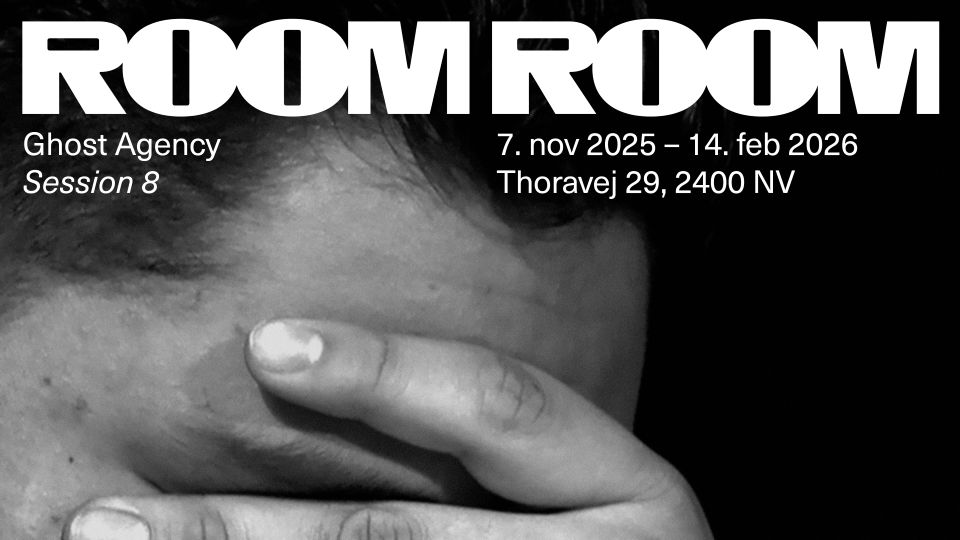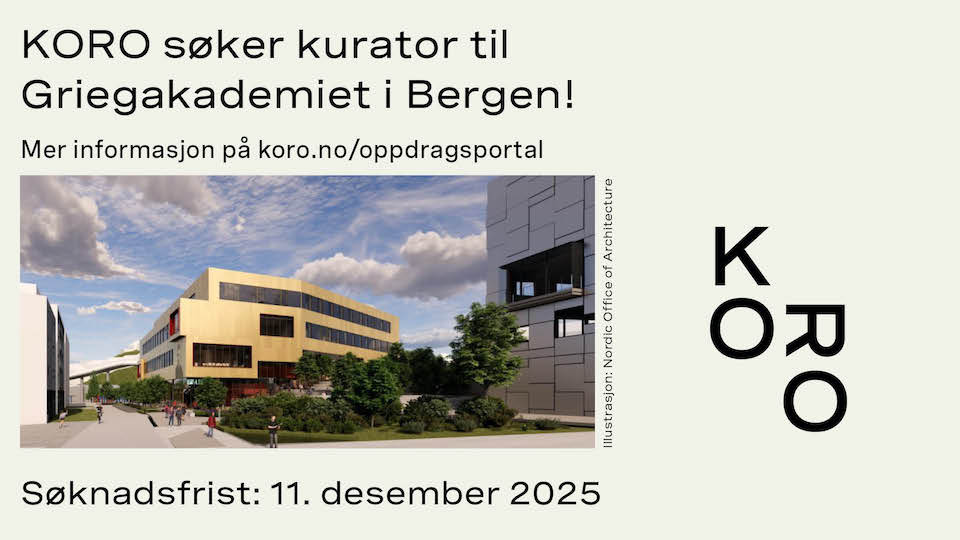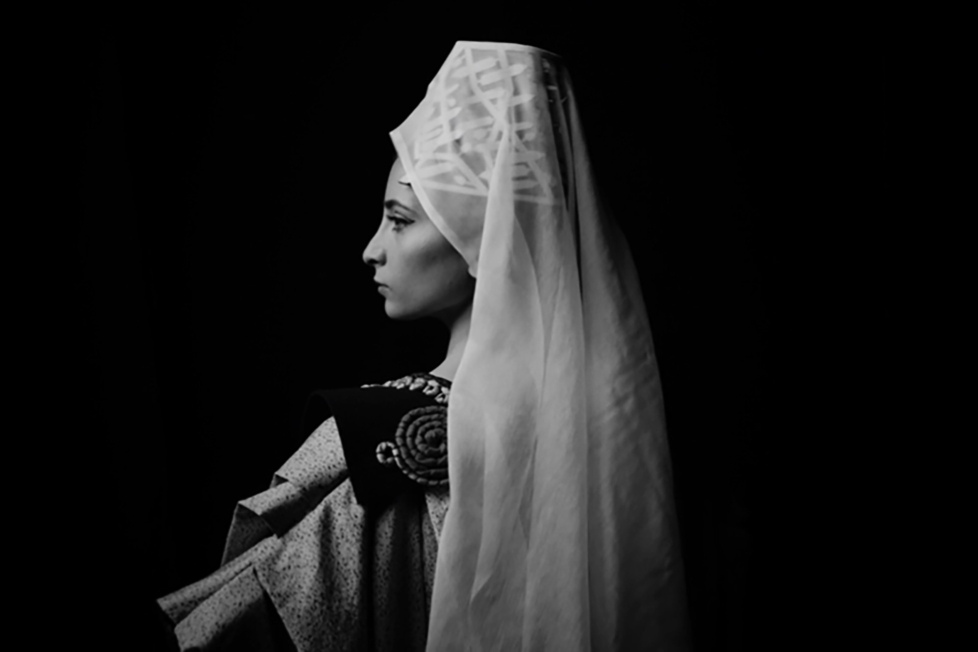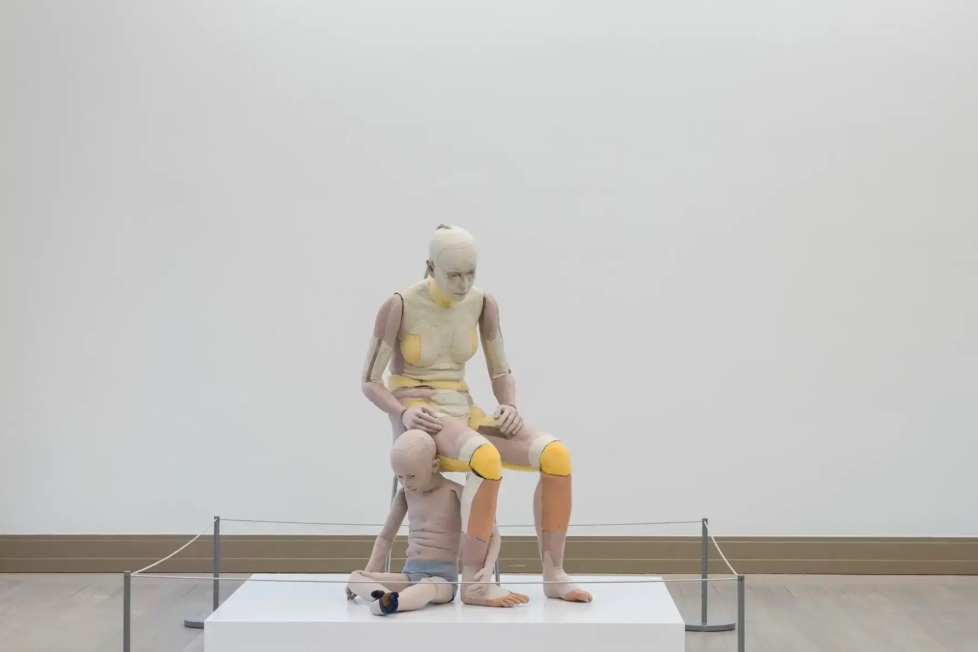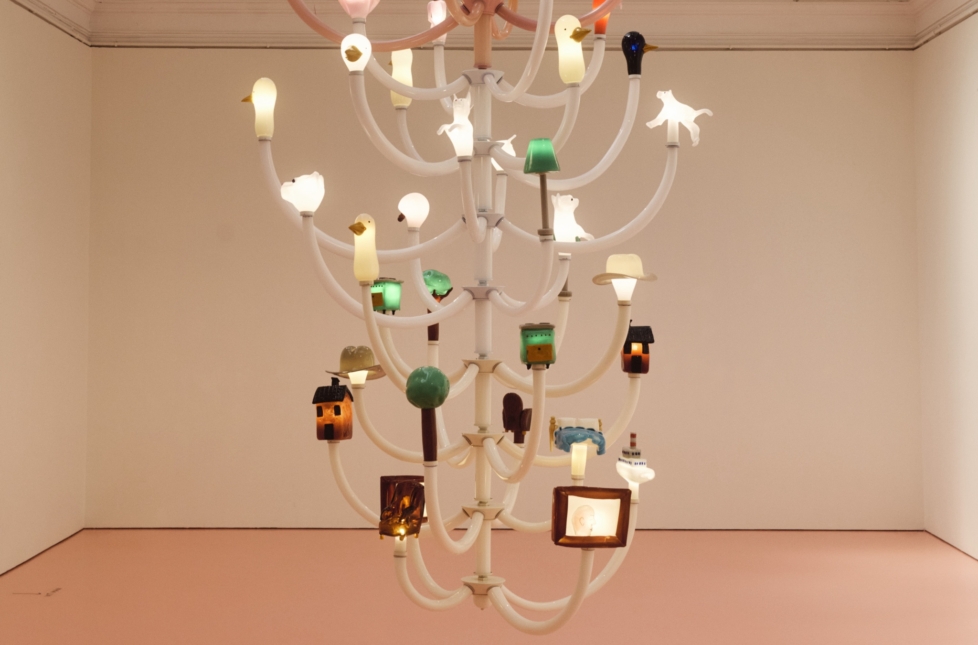
What, when it comes down to
it, is an exhibition? That’s the kind of question that people who don’t spend
all day thinking about art find really annoying. Or so I imagine. And so we
keep that kind of talk to ourselves, voicing it only in forums like Kunstkritikk.
The fact that an exhibition is also a way of thinking, which in turn gives rise
to even more thinking, is clear in Henrik Olesen’s current exhibition at Den
Frie, which I visited last Sunday while my inner chat ran along several
parallel tracks: on the affinities with the artist’s previous exhibitions and
with other contemporary artists who inhabit the Olesenian conversation, Isa
Genzken, Michael Krebber, Jutta Koether, and Josef Strau. But also the threads
to deceased artists such as Hanne Darboven and Michael Asher, because the
generational trail reminded me of the 1990s artists’ predilection for 1960s
conceptualism which, alongside a substantial dose of thinking in the vein of
Foucault’s archaeology of knowledge, was pretty much the base recipe for
institutional critique – even if it all ended up in a great love of the
institution, as is evident in this exhibition too. But that’s another story.
In other trains of thought, I ping-ponged with various people who I ceaselessly talk about art with, including those who are no longer with us. I was reminded of a deceased artist from Olesen’s generation who once told me that good exhibitions made him want to dash home and start a new painting. I, too, get the urge to write when something pokes and prods at me the right way. If the verdict comes too quickly, writing the review can feel more like homework.
I wouldn’t say that Olesen’s exhibition makes speedy verdicts in that sense, but one thing is clear: the crocodiles are the main characters. Of course, this is a retrospective, and I am already familiar with many of the works and their attitudes, but it’s not only about the papier-mâché crocodiles being newcomers. Rather, it’s as if the entire discursive fabric of the exhibition hangs from these reptiles like long, tangled milky threads; as if this soup were the semi-aquatic creatures’ natural habitat.
It’s something about their crocodile-ness. In all their obvious papier-mâché-being, their broad tails still rest heavily on the table as if full of dense muscle, not chicken wire. Likewise, the painted surfaces are knobbly and textured in a way that may not resemble scales, yet still conveys an impression of gnarled, slightly repellent skin.
Crocodiles in Copenhagen is, in itself, a brilliant image and an effective conceit familiar to most artists and children’s book authors. It ignites a long evolutionary tale about animals that lived back in the time of the dinosaurs, but also in the era of the Egyptian pharaohs. Placing a non-native animal in the ‘wrong’ climate zone is productive, even if it’s just in the form of an image or a sculpture. Or a mummy. Because there are other crocodiles to be found in the city this spring.

Glyptoteket has recently placed two baby crocodile mummies in a display case in its Egyptian collection. They are no bigger than a couple of medium-sized codfish, and are probably more than 3,000 years old. The mummies originate from excavations conducted in the late 19th century in the Fayoum oasis southwest of Cairo, and they entered Glyptoteket’s collection in 1911. Also, as if two baby crocodile mummies weren’t fascinating enough, X-ray imaging has recently confirmed that one of the mummies does indeed contain a small crocodile, while the other only has a stick and some straw inside. They are believed to come from a sacred crocodile habitat, which means that they were thought to carry some of the sanctity of that biotope within. How’s that for discursive soup! It was even connected to the Nile.
In the X-ray image presented
in the display case, you can see the outline of the embalmed baby croc and an
old museum label attached with string. Perhaps a relic from earlier
Egyptologists’ examinations? “Yes,” one of my conversation partners replies, “there’s
a strong tradition of opening mummies and seeing what’s inside.”
It’s always so exciting to see what’s inside! Not least when someone has taken such great care and spent months sealing it all up according to the intricate rules of the art of mummification. Reportedly, only a few people knew the secrets of the correct handling of ointments and how the bandages should be wrapped around the body.
Compared to this, Olesen’s glue-soaked newspaper over jute and chicken wire represents a rather more rudimentary process. Apropos institutional critique, papier-mâché is exactly the kind of thing many of us growing up in Denmark would have come across at day care. I’ve often wondered if the strong representation of Danish artists within the relational aesthetics of the 1990s had to do with the fact that they were the first generation of children sent to day care centres from a young age. While Olesen belongs to a different wave of institutional critique, it is evident that the after-school club attitude is as intentional as it is painstakingly produced.
Among Olesen’s crocodiles, the black one is, according to the work’s title, “Inspired by the crocodile mummies, found at Al-Shutb near the Kom Ombo Temple.” But the titles also belong to a matrix typical of the artist, where “inspired by” refers both to art historical terms such as “after XX” and to the mainstream media’s (as well as many art institutions’) notions about the concept of inspiration, which is as old as the idea of genius.
The latter is an issue that makes most contemporary artists squirm uncomfortably without knowing how to relate to it, even though they clearly are. Things were simpler in ancient Egypt, where embalming experts were quite simply regarded as holy. That’s nice and clear, and it emphasises the difference in positions and habitats.
Olesen’s crocodiles belong to a particular corner of Continental contemporary art. Ideally, they should strike a perfectly nonchalant balance poised somewhere between a genuine fascination with the fabulous creatures (to wit, the lifelike representation of the tensely muscled hind legs) and a distanced, semi-ironic tongue-in-cheek sensibility (to wit, the technique, which any clumsy-fingered day care worker could handle).
Here, the art institution is still a temple that guarantees a safe space for the particular imaginative realm we call an exhibition. A place that makes it possible for such a realm to unfold across several locations, embrace multiple time periods, and rattle inside many minds. Mine included.
Henrik Olesen, Food chain incl. prehistoric animals, Den Frie Udstillingsbygning, Copenhagen, until 20 April.
Secrets of the Crocodile Mummies, The Egyptian Collection, Glyptoteket, Copenhagen.S









